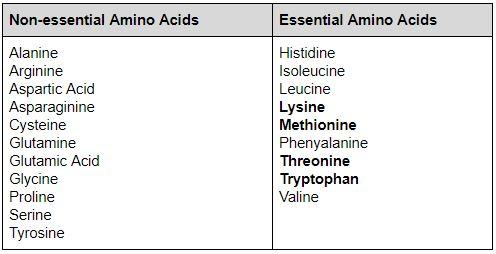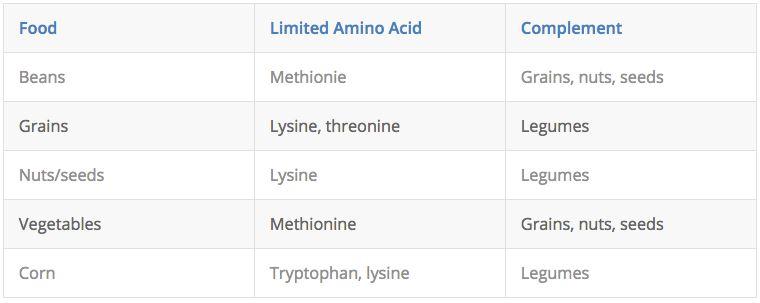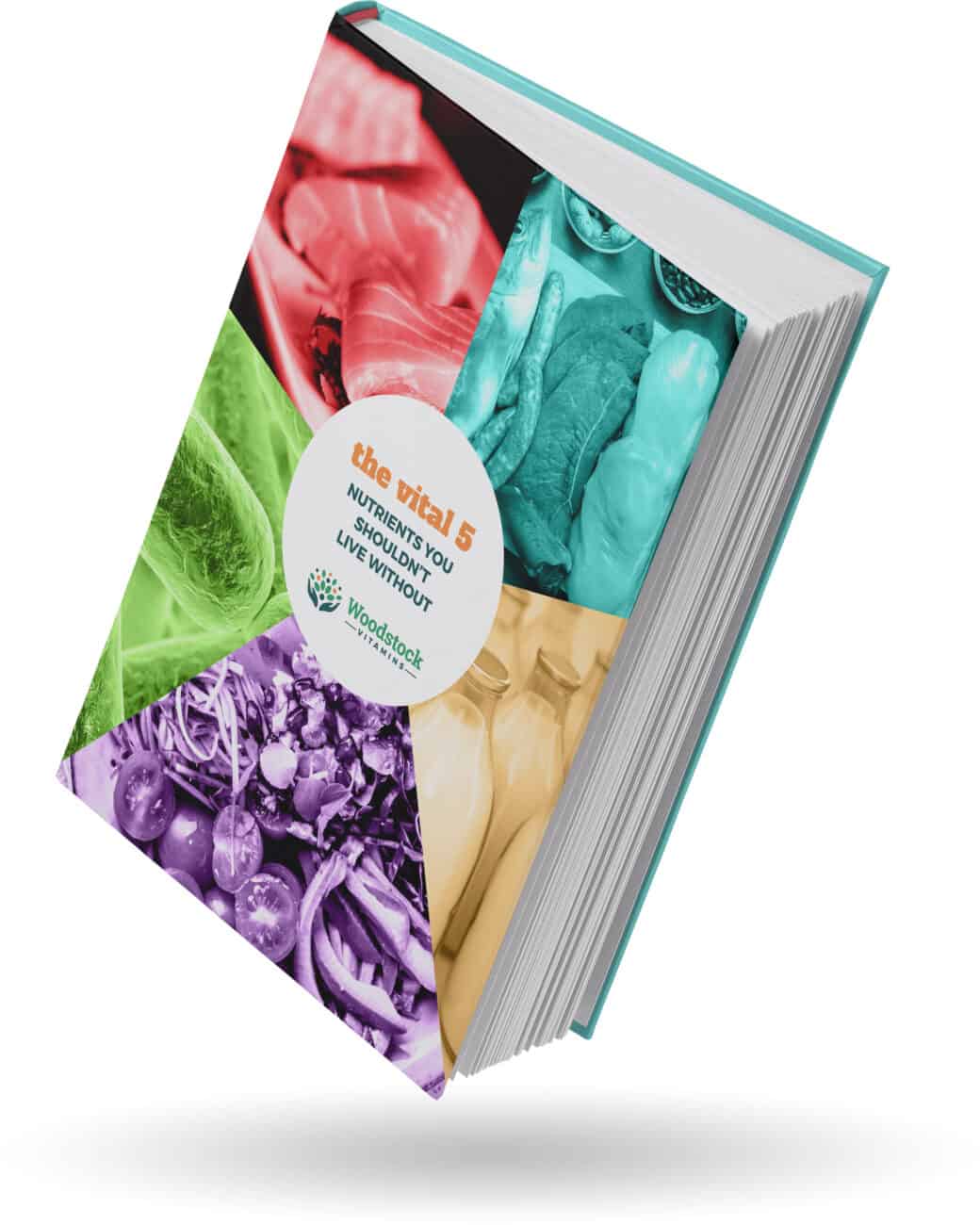Meal replacement shakes, protein supplement powders, and smoothies are everywhere. In our quest to get all our nutrition from a magical jar instead of our diet, we’ve created a billion dollar market of flavored, sweetened, plant and milk powders in jars, bags, and packets.
There’s so much noise in the protein supplement space. We want to teach you to tune out all the nonsense and ask three important questions:
- How much protein do I need?
- What do I have to look out for?
- How do I not get ripped off?
It certainly should not be complicated. We will teach you what really matters in regards to proteins and protein supplements. We’ll apply these lessons to Woodstock Vitamins protein supplements, so you can see why we have 20 or so different options. There is a reason, I swear…
By the end of this, you’ll be able to size up any protein supplement on the border wall-sized display at any store and be confident you are using the right protein supplement for you.
What is Protein?
Protein is one of three macronutrients (along with fat and carbohydrates) in human diets. Proteins are nitrogen-rich compounds that are made up of amino acids. Proteins are crucial to literally everything in life, human or otherwise. They form muscles, produce hormones, enzymes, and blood, and can be used as an energy source. To be used by the body, we have to break proteins down to their amino acid building blocks. Twenty amino acids are most important and are listed in our chart below.
Most animals can make amino acids. Except us. We stink. We can make only 11. There are 9 amino acids that are considered essential, meaning we must get them from our diets. Below is a chart of the amino acids

We eat protein to get amino acids. If you don’t eat enough protein, our body tissue – muscles, skin, and more – won’t grow, be repaired if it is damaged, or be regularly maintained and kept strong.
Structurally, proteins are pretty interesting. Proteins basically curl up into a big ball. We digest proteins by straightening them out a bit and breaking them off into chunks of amino acid groups. This is important to note: we don’t digest individual amino acids as well as we do proteins and the chunks of amino acids.
“Processing” proteins is the general term applied to any handling or manipulation of a protein before ingestion. Cooking, for example, is processing a protein. It will change the structure of the protein. It could elongate it. It could fracture it into smaller pieces. Changing the protein from its original state via heat or chemical processes will denature a protein. If processing is minimal, a protein will be as nutritious, and sometimes more so, than in its natural, undenatured state. Our goal with supplements is to keep it that way.
Sources of Proteins
Protein compounds are found in many aspects of our diet. The most common source is animal products: beef, eggs, chicken, dairy, and fish.
Proteins are found in plant products as well. Soy, quinoa, pumpkin seeds, nuts, beans, legumes, hemp, and veggies all have protein. There are two big differences between animal and plant sources. First, plants have a low protein “yield”, meaning you have to eat lots of a plant to get the same amount you have to in a small amount of animal protein. This just means you get to eat more healthy stuff if you are on a plant-based diet.
The second is in the difference of the amino acids contained in plants compared to proteins. This is called the “completeness” of a protein.
Complete Proteins
What did the beans say to the rice?

When we talk about proteins, we often talk about the quality of the protein source. This is different from the Woodstock Vitamins “that’s a garbage quality” tirade. This has to do with the amino acids it contains and how well it is digested. There are all sorts of metrics for protein quality, but they are boring to talk about – even for this supplement nerd.
What matters most is that we understand different protein sources will have different amounts of amino acids. Animal sources are highly digestible and rich in all 20 amino acids. Plant sources, not so much. There are four amino acids that are often missing from plant proteins: lysine, methionine, threonine, and tryptophan. This is why those are bold in the first chart. Now you know.
This doesn’t mean a plantosaurus, aka vegetarian or vegan, won’t survive. It just means they may have to work a bit harder to get complete proteins. To get complete proteins from plants, we have to have a diet rich in complementing proteins. A complementing protein is rich in amino acids that are missing from another source. Here’s a cool chart from nutrition.org:

If you eat beans, pair them with grains, nuts, or seeds. If you eat vegetables, pair them with nuts. Complementary proteins do not have to be eaten simultaneously, but it is a good habit to get in to ensure you get complete proteins every day.
Protein is a Vital 5 supplement. Many of us do well with proteins; we get enough and we get all the amino acids, especially those with an omnivore diet. As we discussed in our “What Supplements Should A Vegan/Vegetarian Use?” article, humans have a minimal amount of protein they should get, and even the best plant-based diet can come up short. It’s important a vegetarian or vegan be diligent in getting enough complete protein.
Here’s how to figure out how much protein you should be getting in a day, as long as you are not a super-serious athlete:
Your weight in pounds / 2.2 = Your weight in kilograms
Whatever you weigh in kilograms is what you should be eating in grams of protein a day. For my overweight dad bod, I need 100g of protein a day.
Some people like to debate the importance of protein goals, but this isn’t the forum for that. Human nutrition is pretty well established from a macronutrient standpoint. At worst, I would shoot for no lower than 80% of your weight in kilograms for dietary intake of protein. Protein is critical to human health and it is well established what we need minimally to maintain.
Protein Supplementation
And this is why protein supplements are such a big thing. We may need a little extra protein to hit our daily intake goals.
Let’s be clear about one thing: when it comes to supplements, protein is protein. End of story.
Plant-sourced? Whey? Shiny package? Flexing muscular dude on the cover? HUGE tub of powder bigger than your torso?
Ignore ALL of it.
Let’s figure out how to sort through protein supplements.
Start first with the protein source. When you look at a protein powder, determine what they are using for protein. Is it plant or animal? What is the actual source? Here are some common sources:
Animal Protein Sources
Whey – Miss Muffet says “What’s up everybody? Like the video below and don’t forget to follow me on Instagram!” Social media is dumb, isn’t it? Any-whey… A byproduct of cheese-manufacturing, whey is the watery part of milk that’s left after curds have been formed. Whey is rich in leucine, a “branched-chain amino acid” (more on this in the future), which helps lots for muscle growth and repair.
There are a few different types of whey you may see in supplements:
- Whey protein concentrates – lower fat and cholesterol content, but have higher amounts of lactose
- Whey protein isolates – remove out the fat and lactose
- Whey protein hydrolysates – predigested whey for easier metabolism and reducing the allergenic nature of milk proteins
Here at Woodstock Vitamins, we love whey concentrates. Our manufacturers try to minimize processing, meaning the whey products will have other healthful compounds found in milk, specifically immunoglobulins, an immune supporting compound.
Casein – Casein is a major milk protein that is digested and absorbed much more slowly than whey. Some people will use casein protein products as meal replacement sources because of the slower absorption; it keeps people satiated longer.
Egg – Eggs have the highest protein quality numbers (the boring ones we’re ignoring today) and is one of the best food sources of protein. Egg protein powders, though, don’t use the whole egg – only egg whites. The protein quality is still high, and like whey, it is rich in leucine. There have been fewer studies completed with egg compared to whey, but we are assuming it is fine. Egg protein is the best choice for people looking for an animal protein who are allergic to milk.
Plant Protein Sources
Pea – We use pea as our predominant plant protein source. It is an incomplete protein, lacking methionine.
Hemp – Hemp and CBD are insanely popular right now. Hemp protein supplements are great but know that hemp should be mixed with other plants as it is very low in lysine and leucine.
Rice – Rice is usually added to plant-based proteins because it is low in lysine, but rich in the other amino acids.
Pumpkin Seeds – I vote we change the spelling to Punkin, as it is more fun to say. Pumpkin seed protein is a complete plant protein, making it a great choice for supplementation. It tends to be more expensive than other sources
Understanding Your Protein Supplement Options
Keeping with the scenario of you standing in a store surrounded by protein supplements that are almost going to topple over on you…
You look at the ingredients and determine first the protein source. Next, you have to determine what kind of protein supplement product they are trying to sell you.
Products will vary based on what, besides protein, they put in the product. If it has extra macronutrients (carbs and fat), it can be used as a full meal replacement. Sometimes they will add vitamins, minerals, or supplements either in a whole food form (not typically the case as most supplement companies are dirty liars) or as synthetic or isolated vitamins.
In general, a protein supplement can fit into 1 of 3 major groups:
- Protein Only – this is a product that contains ONLY protein, either animal or plant. It will have minimal amounts of fiber, sugar, and fats, usually less than 2 grams of each.
- Protein Shake Mixes – this is a product that contains protein along with the other macronutrients in a “significant” amount, usually around 4-6 grams. These products are typically used as a meal replacement because they contain all three macronutrients. You can mix this with water only and still build a decent campfire.
- Protein Shake Mixes PLUS – these are Protein Shake Mixes (protein, fat, and carbs) with additional vitamins, minerals, or supplements mixed in there. These can be a general product containing basic vitamins and minerals, or they can be specific mixes for specific health concerns (gut health, blood sugar health, brain health).
Any one of these are fine to use, but there are some important points.
- Use a Protein Only if you are building a healthy smoothie already – one with fruits, veggies, and fats
- If you use a Protein Shake Mix, you technically don’t have to add other macronutrients, but you certainly can.
Protein Shake Mixes PLUS have many vitamins and you don’t overdo it.
- Don’t use an additional multivitamin, or at least check with us to see if it is necessary with your mix
- Only consume these once a day, unless under medical supervision or for a short period of time.
Many people who have multiple shakes a day will use a Protein Shake Mix PLUS along with a Protein Only or Protein Shake Mix, which is a smart thing to do to avoid vitamin overdose.
So that’s it. That’s the difference between the products. There are either animal or plant sourced proteins. Then, it will be either protein by itself, protein and macros, or protein, macros, and vitamins all in one.
Protein Supplement Quality Concerns
Let’s go through the major concerns with protein supplement manufacturing.
Potency
This is a case where “Protein 15g” on a label doesn’t really mean 15 grams of protein. Let me explain…
We test a lot of protein by measuring the amino acids found in the protein powder. So if I were less scrupulous, I could spike the protein powder with synthetic, isolated amino acids. As we said before, amino acids aren’t absorbed as well as protein and don’t have the same nutritional value, funny enough.
Protein manufacturers should test free amino acid content to prove they are not spiking their protein to make it look better than it is.
Along the same idea, a heavily processed protein can be extremely denatured. Most of the time, usual processing steps, which there are a lot of for whey in particular, a slightly denatured protein will still have the same nutritional value. This is obviously true because we cut, beat, and cook our proteins and we all are doing fine.
If a protein is heavily processed, the protein will be too far gone. It is important to try to get as minimally processed products as possible to ensure we are getting as much usable protein as possible.
Purity
Protein supplements are heavily contaminated. In particular, with heavy metals like arsenic, lead, and cadmium. Especially in the plant proteins. We actually recently cleaned house on a few products that were not up to our standards. We have increased the frequency we get Certificate of Analysis documents from our wholesalers, just to keep an eye on it.
Whey protein can have its own set of troubles. Whey comes from cheese, which comes from milk, which comes from cows. I don’t know where babies come from. Cows can be gross. They are fed gross grains instead of grass. They are treated heavily with antibiotics and hormones. Unless of course, your favorite supplement retailer only uses raw materials from New Zealand cows. It’s like a resort for cows there; it’s one of the most humane and clean treatment of cows, so bovine products are of higher quality and have a dramatically lower risk of contaminants. Looking for whey products that come from New Zealand is usually a good strategy to ensure minimal risk.
Besides this, a 2018 third-party analysis of protein supplements found unusually high sodium content in their products. The theory is these things are added to cheap protein drinks to cause water retention, making it LOOK like you are getting early “gainz” on your muscles as you work out.
Look out for supplements using artificial coloring and sweeteners such as acesulfame.
The one thing I’ll add to this is regarding straight-up adulteration. This is adding compounds to the mix but not labeling it. There have been numerous reports of steroids – testosterone boosters – found in many commercial protein products. They also boost the amounts of taurine to give energy, or just go for caffeine. We’ve seen the labels of protein powders that say “Not for use in women.” Why would they do that for a protein powder if it is truly just protein, which is what the label said?
Getting To Know Our Products
We get asked a lot, “What’s the difference between your protein products?” We use the same process we introduce here – separating them first by protein source, then by the type of protein supplement (protein only, protein mix, protein mix plus).
Here’s our guide to Woodstock Vitamins protein powders:
Whey Protein Products
Whey Protein Only
Myocep – in our eyes this is creme de la creme of whey protein. Myocep is a minimally processed, antibiotic-free, hormone-treatment-free whey protein. It has a significant amount of the other goodies found in properly made whey proteins: immunoglobulins. Myocep is one of the smoothest proteins on the market with an amazing taste. The chocolate and vanilla do have stevia, so that is a negative for some people. It’s available in chocolate, unflavored, and vanilla.
Whey Protein Shake Mixes
Grass Fed Whey Protein – Grass Fed Whey Protein is a well-made whey protein with immunoglobulins sourced from New Zealand in a mix with a high yield of dietary fibers (8 grams!). It comes in a vanilla and chocolate flavor. It does not add any sugar or stevia but instead is sweetened with monk fruit.
Whey Protein Shake Mixes PLUS
We have no whey-based protein shake plus! If you want a protein shake mix with vitamins, we only have plant-based protein options. Sorry!
Plant Protein Products
Plant Protein Only
Complete Plant Protein – Our top-rated, high yield (76%!) plant protein is Complete Plant Protein. It uses our pea and rice combo to be a complete protein that is 100% vegan. The only downfall here is that the jar is small, meaning you’ll need 2 jars for a month’s supply. This does NOT contain stevia and is available as an unflavored powder.
Balanced Plant Protein – Balanced Plant Protein is our high-quality pea and hemp protein powder. The advantage of this product is its cost; it is truly a high-quality, low-cost option when it comes to plant protein. It is available as chocolate and vanilla and is flavored with stevia.
Plant Protein Shake Mixes
Vital Plant Protein – Our Vital Plant Protein is a protein shake mix that uses our pea and rice combination. It has a very healthy dose of dietary fibers (5 grams!). It is available as chocolate and vanilla and is flavored with sugar and stevia.
Organic Plant Protein – Organic Plant Protein is a high-quality, affordable option for a Plant Protein Shake Mix. This product’s protein source is pumpkin seeds, which is a complete protein. It’s available only as chocolate (which is far more important than vanilla, in my opinion) and is flavored with sugar.
Plant Protein Shake Mixes PLUS
Complete Nutritional Shake – Complete Nutritional Shake is our mainstay for a comprehensive shake mix with vitamins. Use this once a day as a great meal AND vitamin replacement product. It is available as chocolate and vanilla and is stevia and sugar-free, sweetened with monk fruit.
The Protein Selection Guide
Here are a few scenarios that may help you select proteins with us:
I make my own smoothies filled with healthy fats, fruits, and vegetables.
You should use a product that offers protein only, because, in all honesty, that’s all you need. If you are looking for the best, we recommend Myocep. If you are vegan or want plant protein, use Complete Plant Protein.
I need a meal replacement that I can use a few times a day, and I’m on the go/not near a blender. Grass-Fed Whey Protein is awesome for this.
I do one smoothie a day (with or without food ingredients) and I want to get vitamins. Go with Complete Nutritional Shake.
Tips For Not Getting Ripped Off
When we had our lovely store in the lovely West Hartford, CT, I remember discussing protein value frequently. Specifically, the concern was the size of the jar vs the cost of the product. A local store was focused on selling barrels of protein powders with the black, shiny labels, with names like XPLOSIVE STUFF. Lots of red and zig zags on the label. You know what I’m saying.
Any-whey, they were bringing up a real concern. The MAXXBOOST 9000 was the same price as Myocep, but the jar was 3 times the size. The difference, I pointed out, was that their serving size was a shovelful. The scoop that came in the container could be used to feed goats. I then created/stole a way to compare this. I call it “protein yield.”
Protein Yield = Amount of Protein in a Serving / Size of a Serving
Myocep is a 17g protein in a 21g scoop. The Protein Yield is 15/20 or 75%. The lower the number, the more fluff per scoop.
The second tip is exactly what we tell people to do when they are buying CBD. Determine the cost per gram of protein.
Cost Per Gram = Cost of the Protein Supplement /Grams of Protein in the Supplement
This is a great whey (nyuk nyuk) to compare how two high-quality products stack up against each other. For example, here’s the comparison of two of our own protein powders:
- Myocep = $39.99 / 450 g protein = 8.9 cents per gram
- Complete Plant Protein = $19.99 / 238 g protein = 8.4 cents per gram
Both of them are great. Myocep is the better value (and my absolute favorite).
Protein Supplements – More Than You Ever Wanted To Know

Protein supplements carry a lot of risk. Heavy metal contamination, antibiotics, hormones, and other adulterants are regularly found in products. Manufacturers cut corners by spiking denatured and heavily processed proteins with amino acids to give a false sense of potency.
I wish there was a better way, but I am defaulting to “Don’t buy anywhere else but here.” We are checking practically every lot of protein powder that comes in for all of this stuff. From a whey protein standpoint, nothing beats Myocep. We’ve had that on our shelves since we started Woodstock Vitamins. The quality reigns supreme, it is awesome tasting, and it has a high protein yield for a low price. From a plant protein standpoint, our Complete Plant Protein is a very affordable, high-quality and high-yield plant protein that’s affordable.
And yes, our products aren’t as slick looking as those protein supplements in stores nationwide. I personally see those things and instantly don’t trust them, but that’s me and my crazy. When it comes down to it though, protein is protein. Especially if you are doing your due diligence when purchasing, which we are committed to helping you do every single time.
Just trying to keep it real…

Neal Smoller, PharmD
Owner, Pharmacist, Big Mouth



